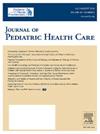Prevalence of Vitamin D Deficiency in Children and the Relationship of Vitamin D Levels With Allergic and Rheumatological Diseases
IF 1.8
4区 医学
Q2 HEALTH POLICY & SERVICES
引用次数: 0
Abstract
Introduction
This study aimed to determine the prevalence of vitamin D deficiency in children and compare vitamin D levels between healthy children and children with various health problems, including allergic, rheumatic and infectious diseases.
Method
Children who were admitted to our center for any reason between June 2022 and June 2023 and had a vitamin D level check were included in the study. Vitamin D levels were examined by age, sex, season, reason for admission and final diagnosis.
Results
The mean 25-OH vitamin D level of 3,532 children was 23 ± 12.5 ng/mL. It was insufficient in 28.4% of the cases and deficient in 18.2%. Factors associated with the highest risk of vitamin D deficiency were female sex, adolescent age, and spring season (p < .000). By diagnostic group, the mean vitamin D level in healthy children was 22.0 ng/mL. The groups with the lowest vitamin D levels were obesity (16.1 ng/mL) and rheumatic disease (18.1 ng/mL).
Discussion
This study showed that vitamin D deficiency is quite common in children, and the most important risk factors are female gender, adolescent age group and winter-spring season. Although routine vitamin D screening is not recommended, testing may be performed in children with a history of allergies, rheumatic diseases, or frequent infections. It may be recommended to extend vitamin D prophylaxis to obese individuals and adolescents.
儿童维生素D缺乏症患病率及维生素D水平与过敏性和风湿病的关系
本研究旨在确定儿童中维生素D缺乏症的患病率,并比较健康儿童和患有各种健康问题(包括过敏、风湿病和传染病)的儿童之间的维生素D水平。方法:在2022年6月至2023年6月期间因任何原因入住我们中心并进行维生素D水平检查的儿童纳入研究。根据年龄、性别、季节、入院原因和最终诊断检查维生素D水平。结果:3532例儿童25-OH维生素D平均水平为23±12.5 ng/mL。28.4%的病例缺乏,18.2%的病例缺乏。与维生素D缺乏风险最高相关的因素是女性、青少年年龄和春季(p < .000)。诊断组健康儿童平均维生素D水平为22.0 ng/mL。维生素D水平最低的组是肥胖组(16.1 ng/mL)和风湿病组(18.1 ng/mL)。讨论:本研究表明,维生素D缺乏症在儿童中相当普遍,最重要的危险因素是女性、青少年年龄组和冬春季节。虽然不推荐常规的维生素D筛查,但有过敏史、风湿病史或频繁感染史的儿童可以进行测试。可能建议将维生素D预防扩展到肥胖个体和青少年。
本文章由计算机程序翻译,如有差异,请以英文原文为准。
求助全文
约1分钟内获得全文
求助全文
来源期刊

Journal of Pediatric Health Care
NURSING-PEDIATRICS
CiteScore
3.40
自引率
10.70%
发文量
140
审稿时长
24 days
期刊介绍:
The Journal of Pediatric Health Care, the official journal of the National Association of Pediatric Nurse Practitioners, provides scholarly clinical information and research regarding primary, acute and specialty health care for children of newborn age through young adulthood within a family-centered context. The Journal disseminates multidisciplinary perspectives on evidence-based practice and emerging policy, advocacy and educational issues that are of importance to all healthcare professionals caring for children and their families.
 求助内容:
求助内容: 应助结果提醒方式:
应助结果提醒方式:


